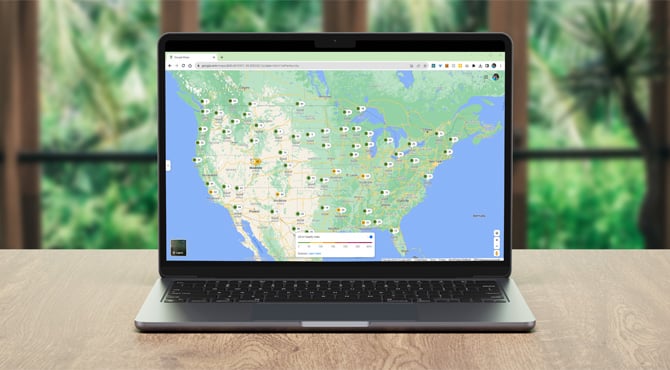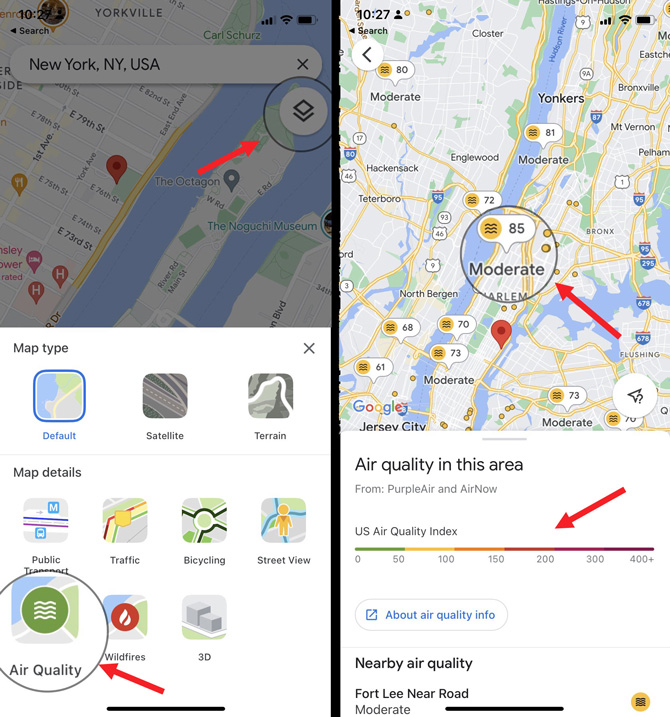Google Maps can help you make better decisions about more than what route to take to reach your destination. Over the years, Google has added traffic conditions, mass transit information, and recently, the ability to check the Air Quality Index (AQI) in many places in the U.S. and a few other countries around the world. Armed with this insight, you’ll know whether to plan a fun-filled weekend in the great outdoors or to stay inside, getting chores done around the house.

The Google Maps AQI data is shown as a layer that you add to your regular map view. You’ll find it in the Google Maps app for Android and iOS/iPadOS and on the Google Maps site. It’s easy to access if you know where to look.
- Browse to the Google Maps site or download and install the Google Maps app for iOS or Google Maps for Android. (Android users should already have it installed.)
- Search for a specific location in the search bar or tap the compass icon in the bottom right to zoom into your current location.
- Tap on the Layers icon, represented by two stacked squares.
- Select Air Quality under the Map Details section of the layer menu, identifiable by three wavy lines inside a circle.
- You’ll see pins with the AQI number and a color-coded bubble. If you don’t see any AQI bubbles, zoom out to find the nearest monitoring station.
The color coding is straightforward: "Green" indicates good air quality, "Yellow" signifies fair conditions, while "Orange" and darker shades (Red and Maroon) portray varying degrees of poor air quality. A value below 50 is considered good, denoting the air is safe to breathe, whereas any reading above 300 is labeled as hazardous.

Where does the AQI data come from?
AQI data is provided by reputable sources, including the Environmental Protection Agency (EPA), PurpleAir, and other government agencies. The data is gathered at specific monitoring stations and is only accurate at that location, but you can see AQI trends in the area.
AQI numbers hinge on the measurement of several air pollutants, including particulate matter (PM2.5 and PM10), ozone (O3), nitrogen dioxide (NO2), sulfur dioxide (SO2), and carbon monoxide (CO). The concentration values of these pollutants, along with others, are monitored over time to compute the Air Quality Local Index.
Looking to do more with Google Maps? Read our story on 16 surprising things you can do with Google Maps, including how to measure distance “as the crow flies on Google Maps."
[Image credit: Screenshots via Techlicious, laptop with Google Maps screenshot via Canva]
As a lifelong tech enthusiast, Hemant Saxena is always looking for the latest gadgets that intersect with his hobbies. For more than a decade, he has been writing about consumer gadgets, popular apps, and social media tips for publications, including Windows Club and Techmate Tricks.













